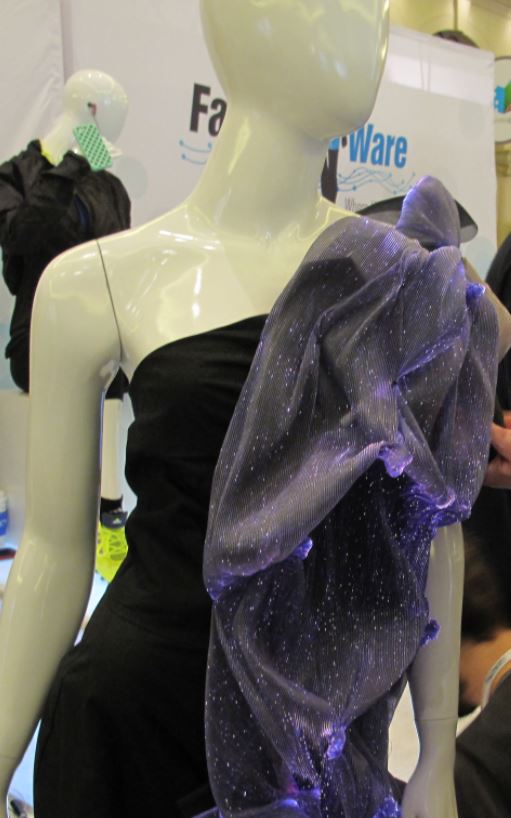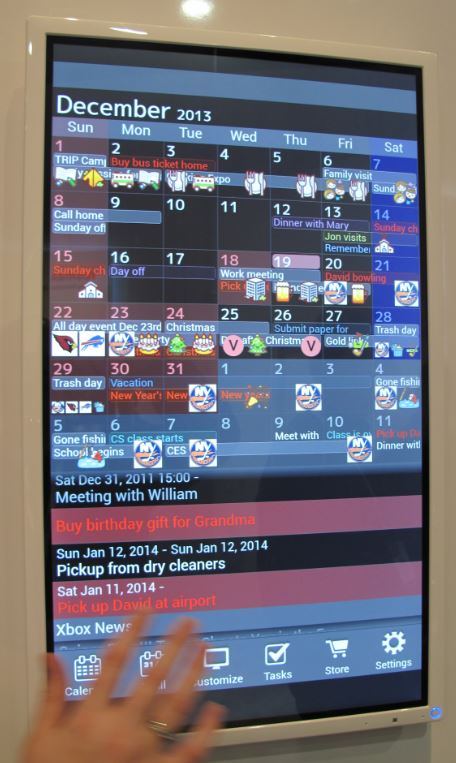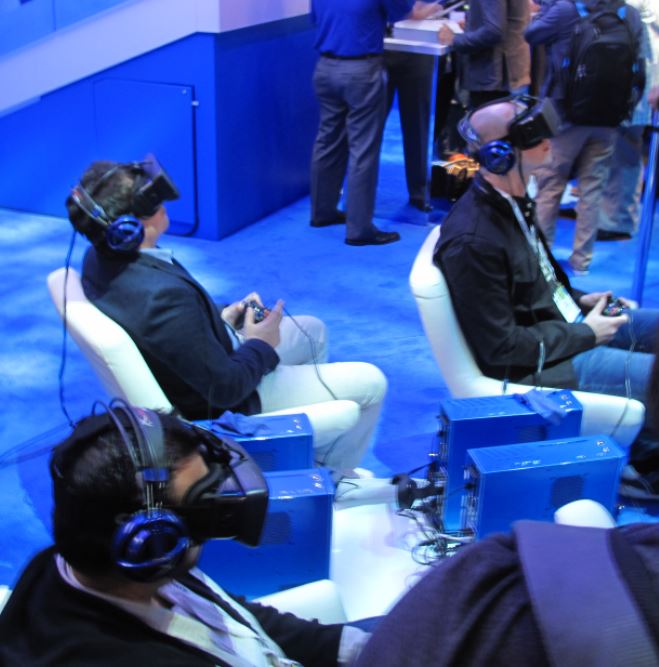CES at the Fringe
When I walk CES, I prefer to look in the fringes – the overlooked areas where large corporates are floating new ideas, and startups are blossoming. What are the hidden jewels that could indicate the beginning of a trend?
We’ve all seen the media coverage of 4k curved TV screens, even a curved phone, and of course the plethora of wearable devices at CES 2014 in Las Vegas. But the interesting new trends can be found in the corners of the exhibits. Here’s a short sampling:
Mercedes Benz – Predictive User Experience
In a corner of the Mercedes-Benz booth, two engineers demoed a concept called Predictive User Experience. The idea here is to fuse information from a variety of sensors – such as weather, day/time, number and type of passengers - and predict likely user actions. For example, if Mom & Dad and the children are entering the car on a Friday evening, it is likely they are going out to eat for dinner or to the movie theater. The car can adapt with pre-filled navigation choices. If it’s Monday morning with a single driver, this is a commute and certain business calls can be anticipated. If it’s raining outside and three new, wet, passengers are entering the vehicle, the climate system can automatically adapt. This is an interesting concept which is part of a trend in context sensitive computing which will make our lives easier at home, at the office, and of course, in the car.
Fashion Tech
Trackers for humans (and pets) got a lot of attention this year. But underneath the sheer quantity of tech introduced, one could see a new trend emerging – tech as fashion. Fashionware showed LED-enhanced evening wear, Netatmo premiered the June “Sun coaching jewel”, a wrist-worn sunlight tracker, and a startup called FashionTEQ presented an e-ink pendant (this one still needs a little design help). Speaking of e-ink, you may see more if it around your home – twelve24 showed the CLOCKONE, an enormous (and light) e-ink decorative clock.
There were a ton of smartwatches, of course, a few even looked somewhat fashionable. Next year, I hope that the bulky brick-on-your-wrist look will be just a memory!
Home Information Portals & Passive Tracking
There have been a number of failed attempts at providing home information portals. But Toshiba has not given up. This year it showed a concept demo for a “Borderless Board” that displays a touch screen family calendar and bulletin board. In addition, it demonstrated an intriguing bathroom mirror that could display the weather forecast, time and schedule information, and even your fitness tracker data trend for the past week as well as current vital signs!
This mirror is part of an important trend for the quantified self movement – away from nagging and goal-setting and towards passive information sharing. Sleep Number’s new x12 bed is another part of the trend. This bed passively collects vital signs and quality of sleep for you and your partner.
In the future, consumers can expect to see fewer wearable devices they have to remember to charge and wear, and more devices that passively collect data – i.e. the office chair, the bed at home, the seat in your automobile. This data will then be aggregated and displayed at strategic locations – the bathroom mirror where one is in a mood to set goals for the day makes a perfect place to show trend graphs!
Hand Gestures are out – Fingers and Eyes are In
At previous CES shows, TV makers (and car manufacturers) were eager to showcase gesture controls and voice recognition. At CES 2014, these input modes received lower billing. LG showed a control focused on recognizing your finger, and Tobii and Eyetribe’s booths showcasing eye-tracking technology were perennially mobbed. Gesture (& finger) tracking seem like gimmicks to me, but eye tracking shows real potential. If properly implemented, eye tracking feels like mind-control – the computer magically scrolls forward as your eyes reach the bottom of the page and the desired option in a multiple choice menu selects itself as your eyes settle on it. Perhaps eye tracking is more interesting because it requires nothing of the user than what they are already doing – looking at objects of interest. Gesture controls require the user to “contort” their bodies, hands, and arms, and both speech recognition and gesture control require the user to learn a somewhat rigid input framework.
Augmented Reality
For the past decade, CES has been cursed with companies trying to get attendees to wear clunky head-gear. This year was no exception with Intel and a few other startups showing the latest in augmented reality gear. Frankly, I was surprised that there weren’t more of these devices demoed this year. Well, there is always CES 2015. Watch for this area to rapidly expand and then (like 3D glasses) to disappear, hopefully.
What I don’t ever want to see again.
Lastly, how would you like to walk into your local mall and see the following scene:
This startup (which will remain nameless as I do not want to give it any more publicity) makes machines that promise 15 minute tooth-whitening services. Perhaps there is another good opportunity for the FDA to intervene? I sure hope so.









